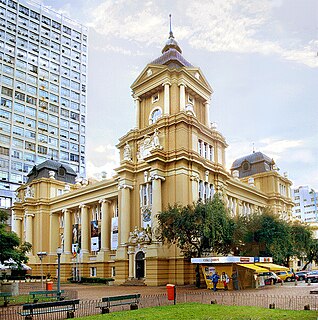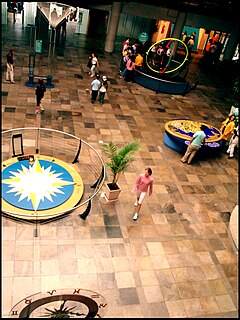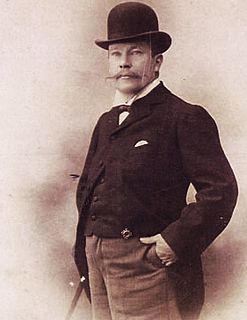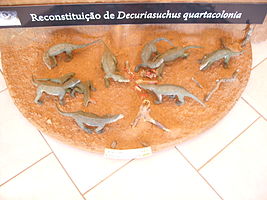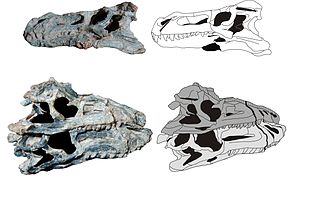| Museu de Ciências Naturais da Fundação Zoobotânica do Rio Grande do Sul | |
 | |
| Established | 1954 |
|---|---|
| Location | Rua Salvador França 1427. Porto Alegre, Rio Grande do Sul, Brazil |
| Coordinates | 30°03′06″S51°10′38″W / 30.05167°S 51.17722°W Coordinates: 30°03′06″S51°10′38″W / 30.05167°S 51.17722°W |
| Type | Paleontology, Natural history museum. |
| Website | http://www.fzb.rs.gov.br/museu/ |
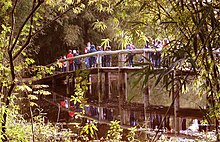
The Museu de Ciências Naturais da Fundação Zoobotânica do Rio Grande do Sul ("Museum of Natural Sciences of the Rio Grande do Sul Zoobotanical Foundation"), is a Brazilian museum located inside the Porto Alegre Botanical Garden. Open from Monday to Sunday 9am to 12pm and from 13h30 to 17h.
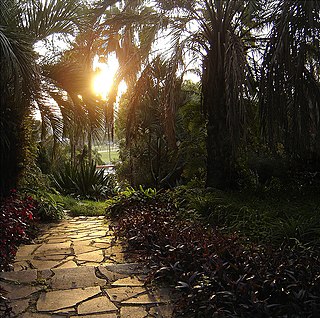
The Porto Alegre Botanical Garden is a Foundation of Rio Grande do Sul located on the street Salvador França, in Porto Alegre, Brazil.
Contents
Emerged in 1954 from the breakup of a natural history collection of the Júlio de Castilhos Museum. [1]

Júlio de Castilhos Museum is a museum located in the city of Porto Alegre. It is the oldest museum in Rio Grande do Sul state.
The permanent exhibition features 49 windows, that approach the richness of species native to Rio Grande do Sul, both flora and fauna. The show is organized in an evolutionary sequence: plant today, groups of animals and paleontological showcases. In this way, show the characteristic fauna of various ecosystems of the state: swamp, field and forest.

Rio Grande do Sul is a state located in the southern region of Brazil. It is the fifth most populous state and the ninth largest by area. Located in the southernmost part of the country, Rio Grande do Sul is bordered clockwise by Santa Catarina to the north and northeast, the Atlantic Ocean to the east, the Uruguayan departments of Rocha, Treinta y Tres, Cerro Largo, Rivera and Artigas to the south and southwest, and the Argentine provinces of Corrientes and Misiones to the west and northwest. The capital and largest city is Porto Alegre. The state has the highest life expectancy in Brazil, and the crime rate is considered to be low.




